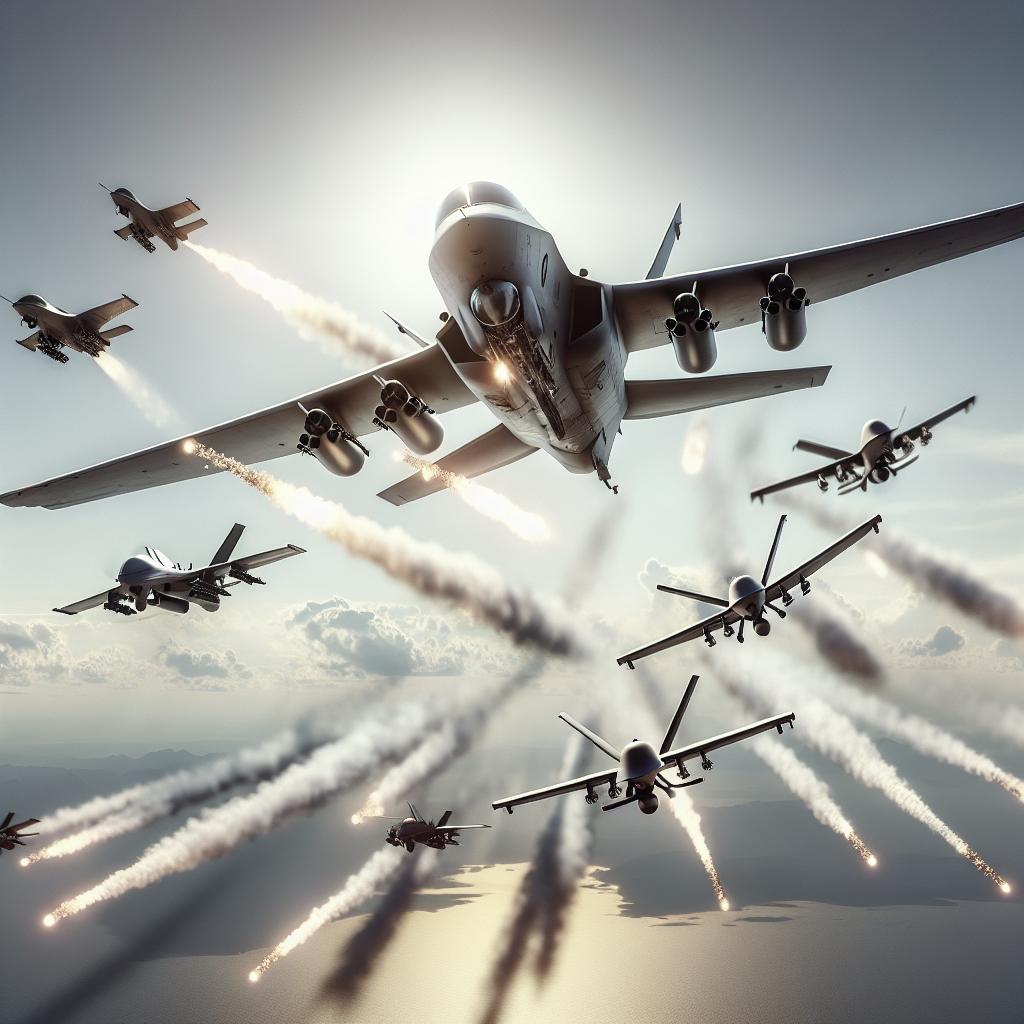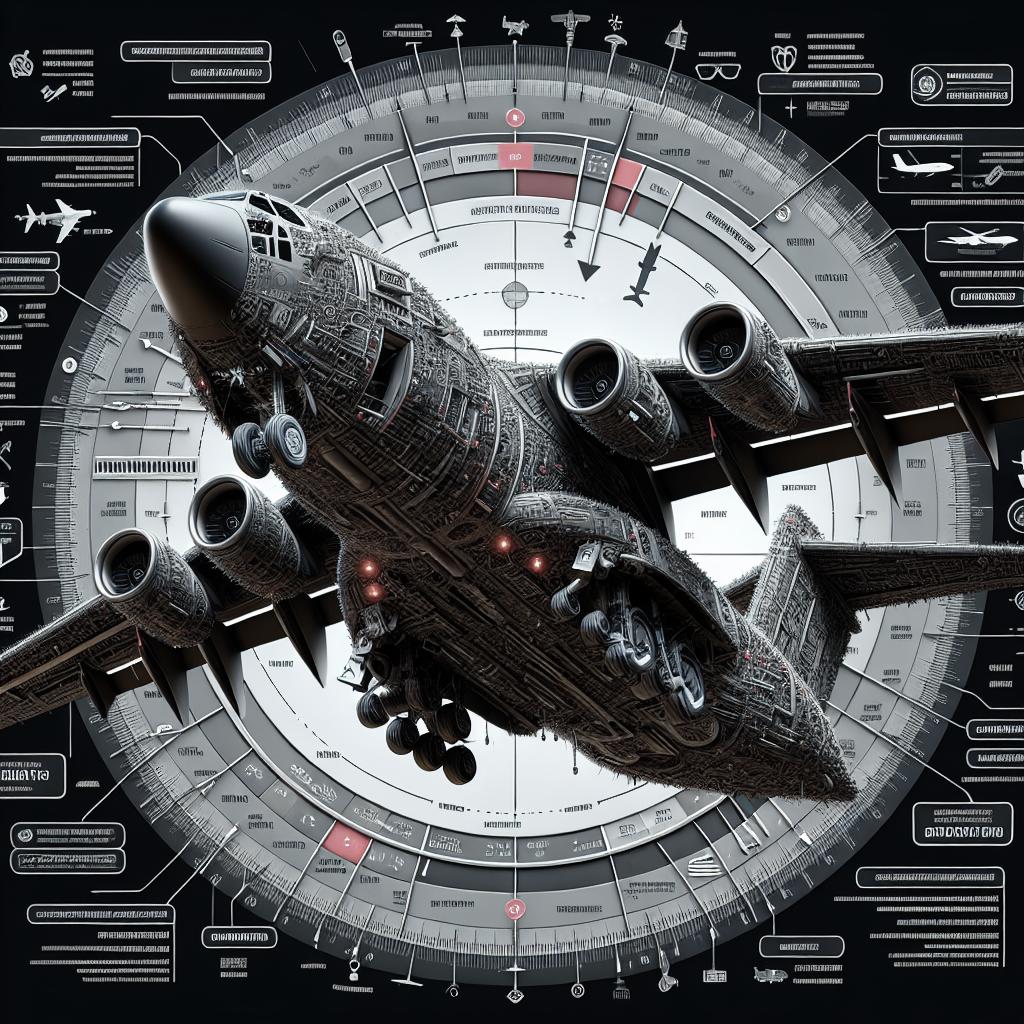“`html
Focus on the Immediate UAV Threat: Intelligence, Surveillance and Reconnaissance.
Introduction
The rapid proliferation of unmanned aerial vehicles (UAVs), often referred to as drones, poses a significant threat to military aircraft and strategic assets worldwide. Understanding how military aircraft handle these threats is essential for appreciating the evolving nature of modern combat. This blog will delve into the global spread of UAVs, the innovative threat posed by non-state actors, the unpredictable future of drone technology, and the critical necessity for robust counter-UAV (C-UAS) solutions. By exploring these themes, we can comprehend the dynamic strategies and technologies employed to maintain air superiority in a drone-infested era.
The Global Spread of UAS
Unmanned Aerial Systems (UAS) are now globally pervasive, revolutionizing various fields from agriculture to surveillance. Militarily, UAVs have found indispensable roles in intelligence, surveillance, and reconnaissance (ISR) missions. Countries such as the United States, China, and Israel have developed sophisticated UAS programs, but now, advanced drone technology is within reach of virtually any nation or entity, drastically shifting the nature of threat assessments and defense strategies. This global spread sees thousands of drones ranging from high-altitude, long-endurance aircraft to small, commercially available quadcopters. With the ability to surveil, communicate, and even carry weapon payloads, UAVs represent a multi-dimensional threat. Military aircraft must therefore be equipped with advanced detection systems and rapid-response capabilities to mitigate these risks effectively.
The danger of non-state actors: drone programs that innovate constantly.
While state actors are certainly formidable, non-state actors like terrorist organizations or insurgent groups also pose significant UAV threats. These groups often innovate constantly, using off-the-shelf drone technology to circumvent traditional defense mechanisms. They can modify commercial drones for reconnaissance missions, or equip them with explosives to carry out attacks—posing a decentralized and unpredictable risk to military forces. For example, the use of drones by ISIS in conflict zones demonstrated how non-state actors could employ rudimentary but effective UAV strategies to disrupt enemy operations. The agility and creativity of these groups require military aircraft to be ever vigilant and adaptive, employing a combination of electronic warfare, kinetic operations, and cyber defenses to neutralize drone threats.
No blueprint for the way non-state actors will use drone technology in the future.
Predicting the future use of drone technology by non-state actors is exceptionally challenging. There is no established blueprint, and the very nature of asymmetric warfare means that these groups will continuously evolve their tactics. They might harness advancements in artificial intelligence, swarm tactics, or even develop counter-C-UAS measures themselves, creating a constantly shifting battleground for military forces. Given this lack of predictability, military aircraft must integrate flexible and scalable counter-drone systems. These systems should not only address current threats but also anticipate potential innovations in drone technology. This demands continuous research, development, and real-time intelligence to stay ahead of adversaries who are unbound by conventional warfare norms.
Protocol Dominance: The need for highly performing C-UAS solutions that quickly adapt to new threats.
Achieving protocol dominance in the realm of counter-UAV solutions is imperative. Military aircraft must be equipped with state-of-the-art C-UAS technologies that can rapidly adapt to emerging threats. This includes advanced radar systems, electronic jamming tools, laser-based weapons, and even AI-driven threat detection and neutralization systems. For instance, technologies like Directed Energy Weapons (DEWs) offer a promising avenue for neutralizing UAVs in a cost-effective and efficient manner. Additionally, AI-enhanced radar systems can provide real-time analysis of drone flight patterns, enabling quicker response times and more effective countermeasures. The goal is to create a C-UAS ecosystem that is not only robust but also responsive to the fast-paced evolution of drone threats. In summary, the integration of highly adaptive C-UAS solutions is critical for maintaining air superiority and ensuring the operational integrity of military aircraft. The battle against UAV threats is ongoing, necessitating perpetual advancements in technology, strategy, and training.
Summary of main points
| Topic | Summary |
|---|---|
| The Global Spread of UAS | UAVs are globally widespread, used in ISR missions and posing multi-dimensional threats to military aircraft, demanding advanced detection and response systems. |
| The danger of non-state actors | Non-state actors continuously innovate, using commercial drone tech for reconnaissance and attacks, challenging traditional defense mechanisms. |
| No blueprint for future usage | It is difficult to predict how non-state actors will use drones in the future, necessitating flexible, scalable counter-drone systems for military aircraft. |
| Protocol Dominance | Highly adaptive C-UAS solutions are essential, employing technologies like DEWs and AI-driven systems to stay ahead of evolving drone threats. |
“`


